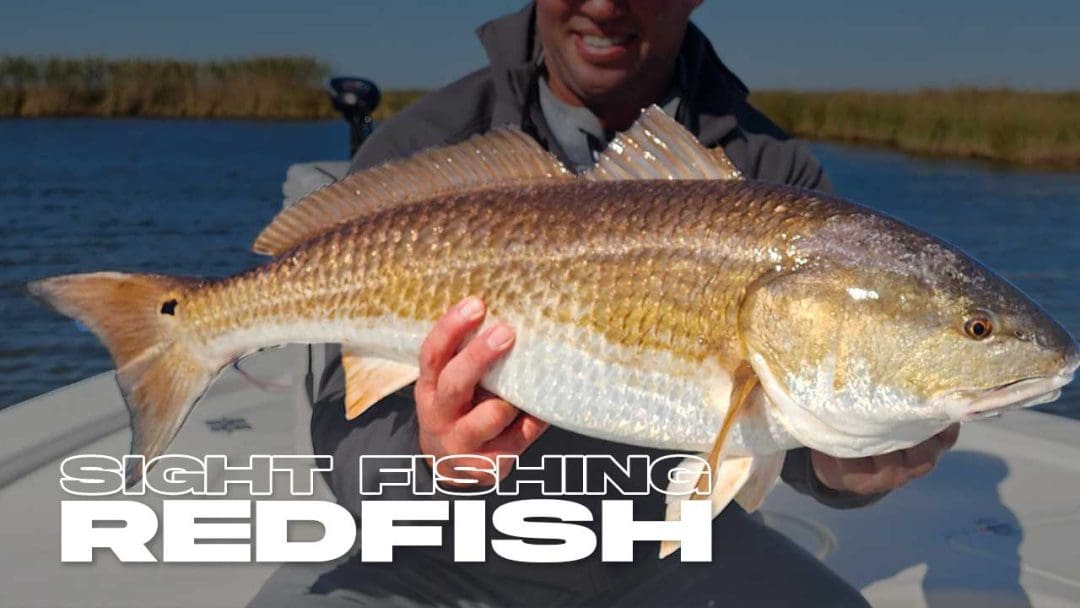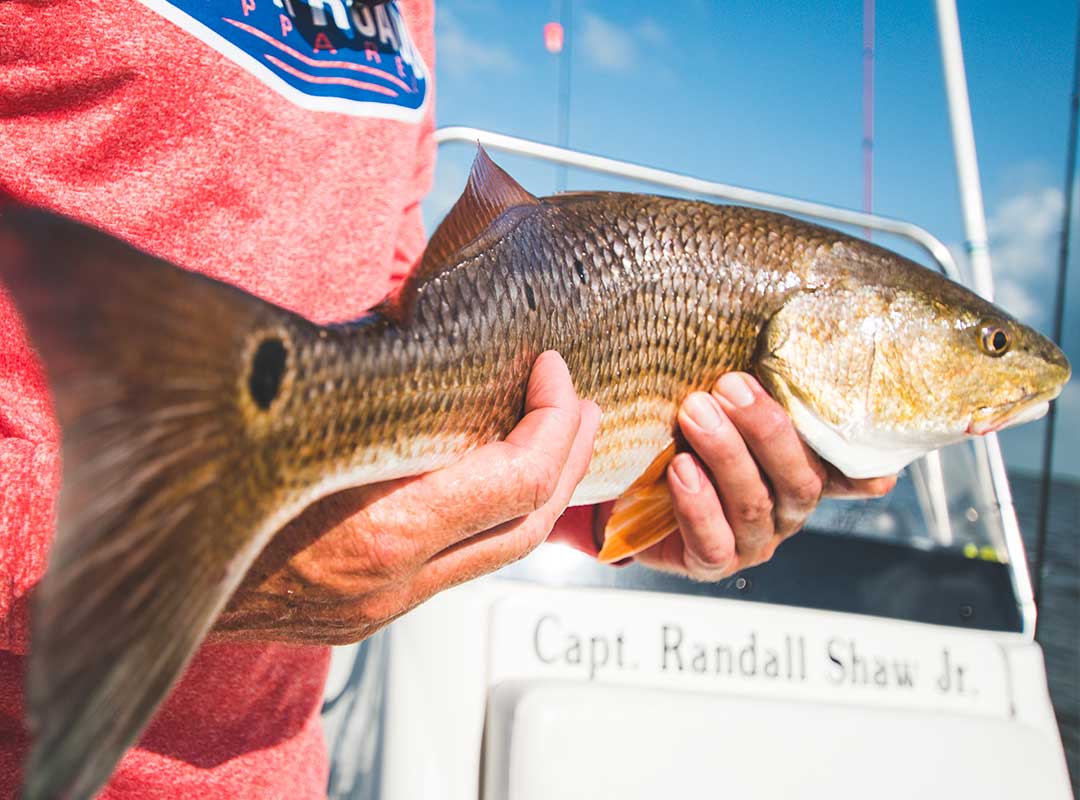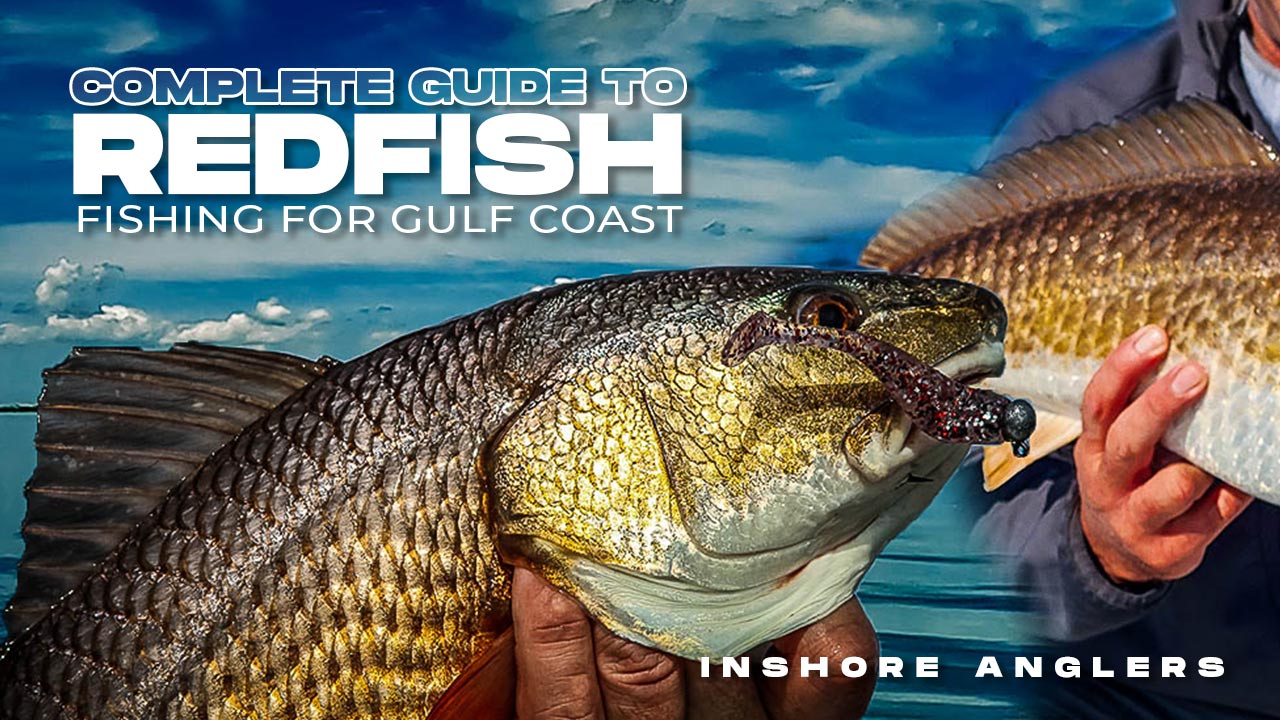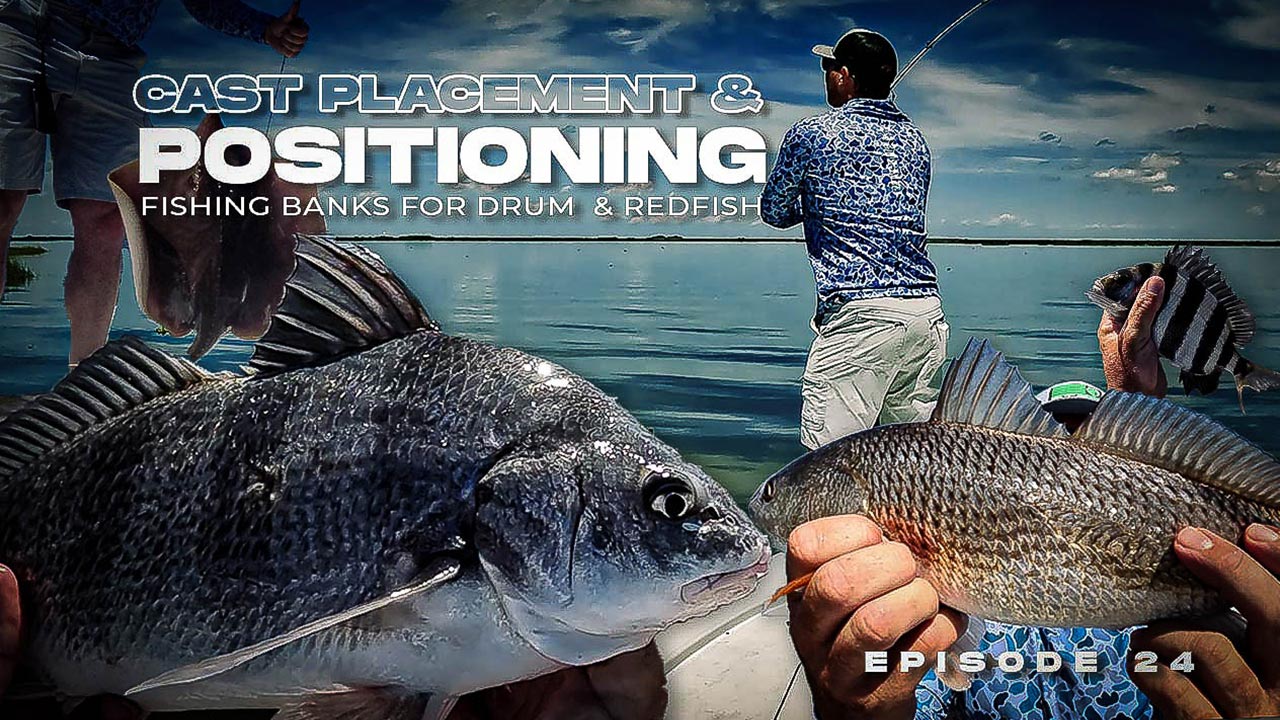Redfish are a popular and delicious gamefish, making them a prized catch for many anglers.
Catching redfish can be a lot of fun for any angler. These hard-fighting gamefish are known for their strength and explosive strikes, making for an exciting battle between angler and fish.
Watch Chasing Big Bull Redfish: Episode 16
Redfish can also be very elusive and challenging to catch, adding to the excitement of the challenge.
Whether fishing from a boat or wading in shallow waters, the thrill of feeling the tug on the line and the anticipation of reeling in a big redfish creates a rush of adrenaline for any angler.
If you’re an angler looking to consistently catch big redfish while inshore saltwater fishing, there are a few key techniques to keep in mind.
How to Consistently Catch More and Bigger Redfish
First, it’s important to focus on the right areas.
Locating the best habitats for Redfish
Look for shallow flats with grassy areas, oyster bars, or mangrove roots – these are prime redfish habitats.
Once you’ve found a good spot, use a medium-heavy to heavy action rod with a fast action tip and braided line of 30-50 pounds, paired with a spinning or baitcasting reel with a high line capacity.
Offering prime bait selection and presentation for Redfish
Redfish are attracted to live bait like shrimp, mullet, and crabs, but artificial lures such as topwater plugs and soft plastics can also be effective.
When casting, aim for the edges of grassy areas or mangrove roots, and keep a steady retrieve with occasional twitches.

Sight Fishing for Redfish
Another effective technique for catching big redfish is sight fishing. This involves looking for redfish in shallow water and casting to them directly. Polarized sunglasses are essential for spotting fish in the water. Once you’ve located a redfish, make a quiet and accurate cast with a live bait or lure. Sight fishing can be challenging but can lead to some of the most exciting and rewarding catches.
Redfish Behavior and Habitat
To locate bigger redfish, it’s important to understand their behavior and habitat preferences.
Fall Redfish Fishing
During the fall months, larger redfish can be found in shallow waters along the coastlines, particularly around structures such as oyster beds, jetties, and bridge pilings.
These structures provide shelter and a food source for redfish.
Winter Redfish Fishing
In the winter, redfish tend to move into deeper waters, but can still be found around structures such as deep channels and underwater ledges.
Spring & Summer Redfish Fishing
During the spring and summer months, larger redfish can be found in the bays and estuaries, particularly around grass flats and marshy areas.
Redfish Structure and Habitat
In addition to understanding the time of year, it’s also important to pay attention to the structure of the water.
Big redfish prefer underwater structures that provide shelter and food, such as oyster beds, jetties, bridge pilings, submerged logs, and rock formations.
They also tend to congregate around areas with a change in water depth or currents, such as channels or drop-offs. Grass flats and marshy areas can be prime spots to find larger redfish during the spring and summer months.
By targeting these structures, anglers can increase their chances of catching a trophy redfish.
Watch Fishing Grass Flats for Redfish: Episode 17
In general, larger redfish tend to prefer areas with a mix of structure and open water, as these areas provide a variety of hunting opportunities and cover from predators.
When targeting larger redfish, it’s important to use the right gear and techniques.
Redfish Rod Types
A medium-heavy to heavy action rod with a fast action tip paired with a spinning or baitcasting reel is recommended, with braided or monofilament line of 15-30 pounds and leader of 20-30-pound fluorocarbon.
Best Redfish Baits & Lures
Redfish are attracted to live baits such as shrimp, mullet, and crabs, as well as artificial lures such as soft plastics, spoons, and topwater plugs.
By understanding the behavior and habitat preferences of larger redfish, and using the right gear and techniques, you can increase your chances of landing a trophy catch.
Best time of day for catching Redfish
It’s important to pay attention to the tides and time of day. Redfish are most active during the falling tide and low light conditions, such as dawn and dusk.
During these times, redfish are more likely to be found feeding and are therefore more likely to take your bait.
By keeping these factors in mind and using the right gear and techniques, you can consistently catch big redfish while inshore saltwater fishing.

Reach out to local Redfish fishing guides
Talking with local guides can be also be a valuable resource for anyone looking to time the feeding patterns of local redfish. Experienced guides should have an intimate knowledge of local waters and the behavior of Redfish within them.
They can offer insight into the best times of day, tides, and locations to catch redfish.
By understanding the feeding patterns of redfish, anglers can increase their chances of success and have a more productive and enjoyable fishing experience.
Local guides can additionally offer tips on the best gear and techniques to use for redfish fishing in their area.
The knowledge gained from talking with local guides can be the difference between a successful fishing trip and a disappointing one.
Moon Cycles for Catching Redfish
If you’re an angler who favors moon cycles to plan your fishing trip, our table provides a helpful guide to the best times to fish for redfish based on the moon phase.
Knowing the optimal fishing times can greatly increase your chances of landing a big catch, and our table makes it easy to plan your next redfish fishing adventure.
| Moon Phase | Best Fishing Times for Redfish |
|---|---|
| New Moon | Early morning and late afternoon/evening during rising tides |
| Waxing Crescent | Early morning and late afternoon/evening during incoming tides |
| First Quarter | Mid-morning to mid-afternoon during high tides |
| Waxing Gibbous | Early morning and late afternoon/evening during incoming tides |
| Full Moon | Late afternoon/evening during rising tides |
| Waning Gibbous | Early morning and late afternoon/evening during outgoing tides |
| Last Quarter | Mid-morning to mid-afternoon during low tides |
| Waning Crescent | Early morning and late afternoon/evening during outgoing tides |
Whether you prefer early morning or late afternoon/evening fishing, incoming or outgoing tides, or high or low tides, our table has you covered. Keep in mind that fishing times can vary based on location, weather conditions, and other factors, and this is intended simply as a useful starting point for maximizing your chances of success catching Redfish.
With some additional knowledge, and a little bit of luck, you’ll be well on your way to experiencing the excitement and thrill of catching more redfish.
The excitement of catching redfish is not just in the catch itself but also in the memories made and stories shared about the experience.

Fishing Gasparilla Florida Inshore Grand Slam Join us as we head out from Gasparilla Florida on a perfect fall…

Fishing Guide: Catching Redfish in the Gulf of Mexico Learn How to Catch Redfish (Red Drum) in the Gulf…

Cast Placement | Bank Fishing Redfish & Black Drum Positioning to Catch More Fish. Learn about effective positioning when…

